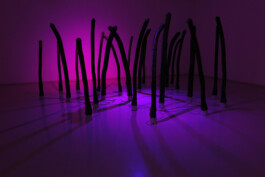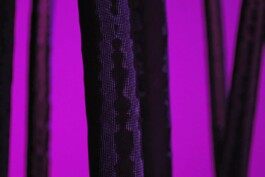TROPISM | Art-Science Collaboration
▷▷▷ Joint work with Prof. Yasmine Meroz
Genia Schreiber Tel Aviv University Art Gallery | January 2020 to December 2021
Group Exhibition: Plan(e)t, curators: Dr. Tamar Mayer and Dr. Sefy Hendler
Wrote about Tropism:
Timeout Tel Aviv [Heb]
The Times of Israel
Portfolio Magazine [Heb]


Tropism is the joint work of Liat Segal and Prof. Yasmine Meroz and a quintessential Art Science collaboration.
A field of robotic plants is positioned in the gallery space. Inspired by natural plant behavior, the large-scale shoots slowly move in response to the changing light. Tropism - plants’ motion in response to stimuli - is expressed by the carbon-fiber mechanical shoots as they follow the artificial magenta sunrises and sunsets at the gallery space.
Installation
Technique: Electronics, mechanics, software, carbon fibers, light
Installation size: 13\13 meter, individual sculpture size: 25/25/300 cm
Tropism was commissioned by the Genia Schreiber Tel Aviv University Art Gallery. European Union's Horizon 2020 Research and Innovation Program (GrowBot), and The George S. Wise Faculty of Life Science, Tel Aviv University supported the work.
Tropism is the first collaboration between Liat Segal and Yasmine Meroz, followed by Impossible Object. The two documented their art-science partnership in a paper published in Quantitative Plant Biology.